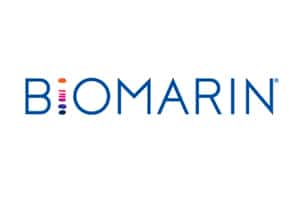 A drug in development at BioMarin has increased growth rates in children with dwarfism in 50%, raising hopes for the first effective therapy for the condition.
A drug in development at BioMarin has increased growth rates in children with dwarfism in 50%, raising hopes for the first effective therapy for the condition.
The small study in children with achondroplasia – the most common form of dwarfism – showed that children treated with the highest dose of BMN 111 (vosoritide) grew 6cm in six months, while those on placebo grew just 4cm.
Typically people with achondroplasia will achieve an adult height of around 130cm (just over four feet tall), and tend to have short legs with a high upper to lower body ratio. While the gain in overall height was significant in the 26-patient trial vosoritide seemed to have no impact on body ratio.
While the hope was that the drug might improve upper to lower body proportionality, there was also the possibility that it might make it worse.
The results suggest vosoritide could a new treatment option for achondroplasia alongside growth hormone, which has a modest impact on stature but tends to lose activity after about a year. The condition affects around 96,000 people worldwide, of whom around a quarter are children and so could benefit from a growth-accelerating treatment.
The hope is that vosoritide will continue to work over several years, providing a much greater increase in adult stature than growth hormone alone.
BioMarin’s chief medical officer Henry Fuchs said recently that we an increase of growth velocity of about 50% “would put kids back on track for normal growth rates [and] anything above that rate may enable kids to experience catch-up growth.”
This form of dwarfism is caused by a mutation in the gene coding for fibroblast growth factor receptor 3 (FGFR3) which affects the way cartilage forms into bone and results in shortened bone length. While some cases are inherited, 80% result from spontaneous mutations affecting the children of parents with normal stature.
Vosoritide is an analogue of C-type natriuretic peptide (CNP), another factor that seems to have an impact on the growth of bone and whose receptor is found along with FGFR3 in a cartilage plate found at the ends of growing bones.
Three doses of vosoritide were tested in the trial, with only the highest (15mg/kg given by daily injection) achieving the desired 50% improvement in growth rate. Encouragingly, the drug seemed to be well tolerated at all doses tested.
BioMarin has previously suggested it may add a fourth patient cohort to see if raising the dose further could provide additional benefit and give further information on safety, and suggested it would now test it at a 30g/kg dose to see if ‘catch-up’ growth could be achieved in patients who start therapy later in childhood.
The company indicated it would now discuss the design of registration studies – using a 15mg/mg dose – with regulatory authorities.
BioMarin is a rare disease specialist and already sells several products including Vimizim (elosulfase alfa) for mucopolysaccharidosis (MPS) type IVA and Naglazyme (galsulfase) for MPS type VI. It is also awaiting a regulatory verdict on Duchene muscular dystrophy therapy drisapersen.




